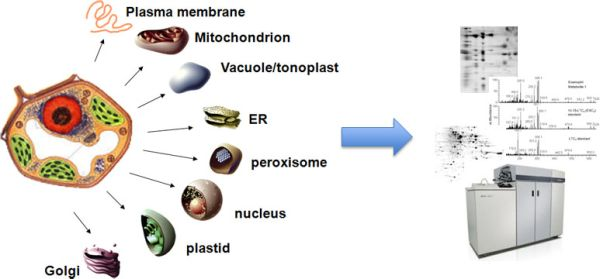Subcellular Proteomics
The distribution and partitioning development of proteins encoded by nucleic acids within cells can achieve specific cellular functions. Therefore, analyzing the protein expression of its subcellular compartments is a practical and necessary functional detection method for cellular proteomics.
The combination of subcellular fractionation and mass spectrometry protein identification technology has helped us develop methods for characterizing proteomics at the subcellular level. Subcellular proteomics, built on decades of biochemical research, has now achieved the separation of subcellular structures. Advances in technologies related to density, size, and charge separation also allow the isolation of subcellular structures while limiting the level of contaminants. Combined with mass spectrometry, high-level analysis at the subcellular level can be achieved, containing 500-4000 types of proteins. Compared to the whole-cell proteome containing 12,000-40,000 types of proteins, subcellular proteomics reduces the complexity of exploring the proteome.

Subcellular Proteomics
Integrating subcellular separation with proteomics analysis seems to be an effective method to simplify the complex proteins extracted from cells or tissues and facilitate the detection of low-abundance proteins. However, the analysis enabled by subcellular proteomics involves complex steps in sample preparation, analysis, and validation. Only by ensuring quality at every step can the full potential of subcellular proteomics analysis be realized.
Bioinformatics company PTM Bio offers subcellular proteomics analysis services using the Thermo Fisher Orbitrap Fusion Lumos mass spectrometry platform combined with nanoLC-MS/MS nanoliter chromatography, including qualitative and quantitative analysis of membrane proteomes, mitochondrial proteomes, histones, chloroplast proteomes, and more.
Chinese/English Project Report
In the final technical report, PTM Bio will provide you with a detailed bilingual Chinese and English technical report, which includes:
1. Experimental procedures (in Chinese and English)
2. Relevant mass spectrometry parameters (in Chinese and English)
3. Mass spectrometry images
4. Raw data
5. Bioinformatics analysis
One-stop service for subcellular proteomics analysis
You only need to place an order and send samples
PTM Bio one-stop service completes: sample processing - machine analysis - data analysis - project report
Related Services
Quantitative Proteome Analysis
Targeted Proteomics
4D Proteomics
DIA Quantitative Proteomics
Label-Free Based Quantitative Proteome Analysis
Label-based Protein Quantification Techniques - iTRAQ, TMT, SILAC
MRM/PRM Quantitative Proteomics Analysis
Sample Proteomics
Exosome Proteomics
Cell Surface Proteomics
Formalin-Fixed Paraffin-Embedded Sample Proteomics
Post-translational Modification Proteome Analysis
Bioinformatics Analysis of Proteomics
Protein Mass Spectrometry Identification
Shotgun Proteomics Identification
Membrane Protein Identification Services
How to order?





